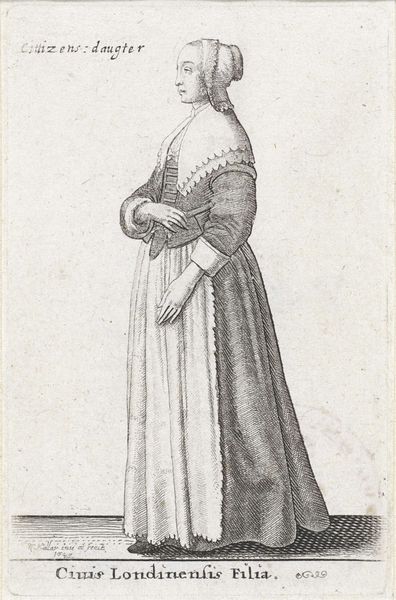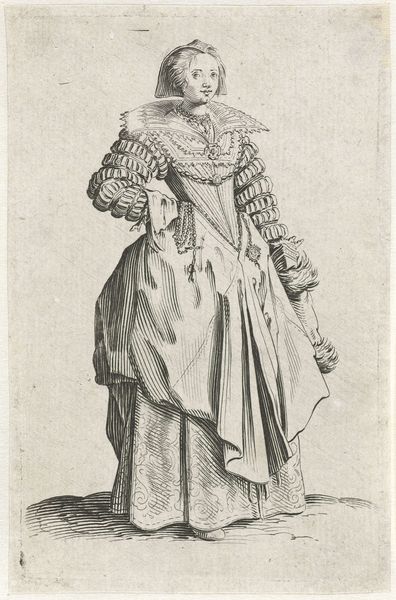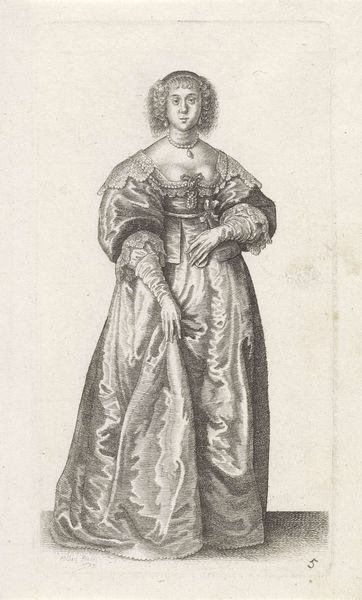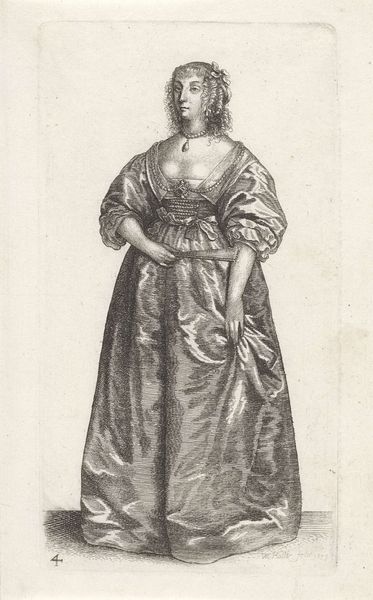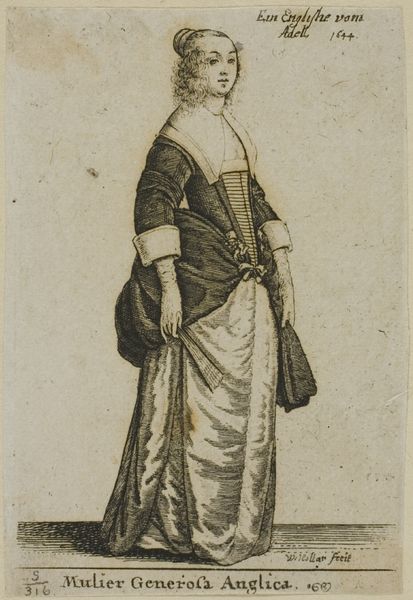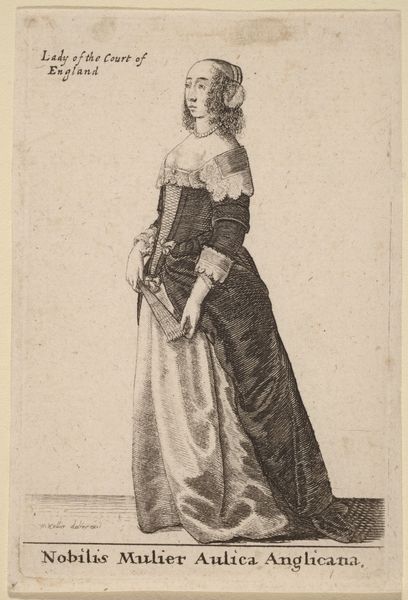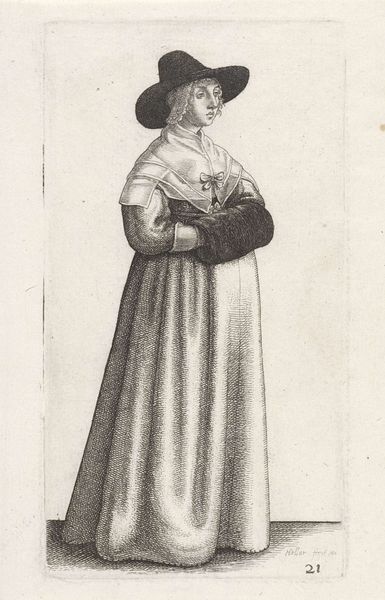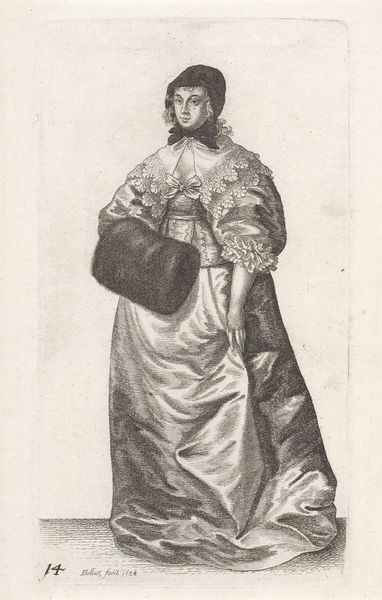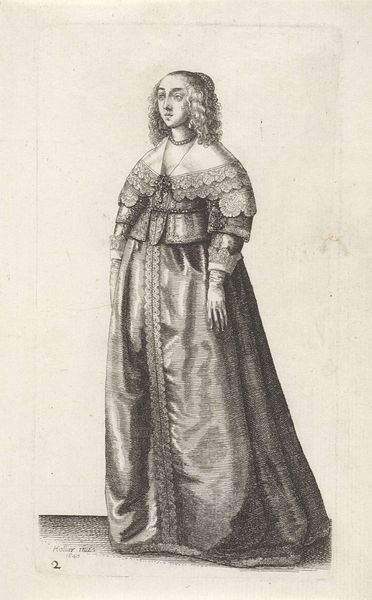
print, engraving
#
portrait
#
baroque
# print
#
old engraving style
#
old-timey
#
genre-painting
#
dress
#
engraving
Dimensions: height 93 mm, width 60 mm
Copyright: Rijks Museum: Open Domain
Editor: This is "Mulier Generosa Anglica", an engraving by Wenceslaus Hollar from 1644. I am struck by the precision of the lines. What can you tell me about Hollar's approach to creating such detailed form in his prints? Curator: Notice how Hollar has employed a variety of line weights and densities to describe the different textures and materials. The velvet of her cloak, for instance, is suggested by a dense network of short, irregular lines, while the satin of her skirt is conveyed through longer, more parallel strokes. Consider also the directionality of these lines. How does Hollar use the arrangement of lines to indicate the fall of light and the folds of the fabric? Editor: It’s fascinating how such simple lines create such dimensionality! Do you think the restriction of engraving influenced the overall composition and design of the figure? Curator: Undoubtably. The linear precision and clarity inherent in engraving necessarily lead to a certain formality. Notice the relatively shallow depth of field and the figure's planar orientation, presented in profile, almost like a fashion plate. This allows Hollar to focus on the intricate details of her costume without the complexities of deep perspective. Consider how the absence of color directs our attention to form and line. How might a painter approach the same subject? Editor: It’s interesting how technique and medium so fundamentally shaped the aesthetic qualities of this piece. Thanks, I am starting to see it in a new light. Curator: Indeed, attending to the formal elements brings us closer to understanding the artist’s vision and the unique qualities of the medium.
Comments
No comments
Be the first to comment and join the conversation on the ultimate creative platform.

